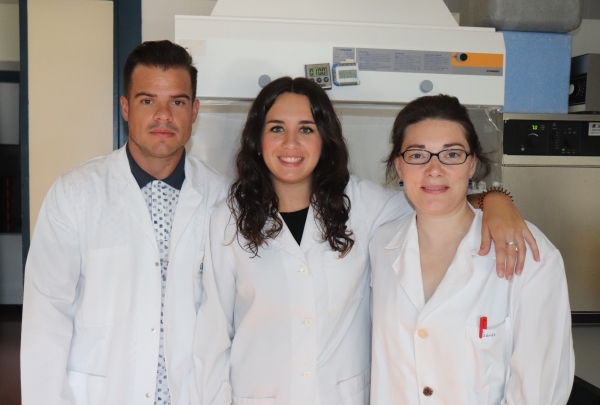People who work in the swine sector have declared war on what is known as Porcine Reproductive and Respiratory Syndrome Virus (PRRSV), responsible for millions in losses, not only in Spain, but throughout the world. Although it was discovered in the 90s, in recent years the sector has faced the emergence of new, more virulent strains that have, in some instances, devastated farms’ entire pig populations. Fighting against this disease today is very difficult, as each of the strains of this virus behaves differently, so no effective vaccine against it has been developed.
A research group from the University of Córdoba, led by Professor Librado Carrasco, has been researching this virus for years with the aim of helping to develop vaccines that reduce mortality in the pig sector. But, for this, it is important to seek out similarities between strains. "In our last study we compared two strains, one of low virulence, on which we had been working since the discovery of the disease; and another of great virulence that is much less known," explains Irene M. Rodríguez Gómez, one of the group's researchers.
The study was carried out at the Animal Health Research Center in the province of Barcelona, always under the control of the ethical committee, not only at the University of Córdoba, but also of the one established by the Generalitat de Catalunya (regional government) to oversee the use of animals for scientific purposes. Three groups of pigs were used. The first was infected with the low-virulence strain, and the second with the high-virulence strain. The third, used as a control group, helped determine the normal parameters of an uninfected animal.
The study lasted 13 days, during which temperatures and blood samples were taken daily, and clinical symptoms observed. On the day of their euthanasia a bronchoalveolar lavage (a procedure to obtain information about the airway cells) was performed, and lung samples were taken. In addition, other organs were used for other studies.
"The results indicated that the high-virulence strain caused earlier and greater damage than did the low-virulence strain," explains the researcher. In addition to the analysis of the symptoms and the lesions observed in the infected pigs, an exhaustive study of what happened with the cells in which the virus was housed, or macrophages, was carried out.
"A reduction in this type of cells was observed in the lungs," says Irene Rodríguez. "These cells are of great importance when it comes to defending the organ, so their reduction causes the lung to be exposed to secondary infections, mainly bacterial, giving rise to other processes, such as bronchopneumonia." The study also determined that high-virulence strains attacked not only the lungs, but also the organs of the lymphatic system, such as the thymus, or bone marrow, which was not perceived in the low-virulence strain.
This study is part of a larger project, funded by the Ministry of Economy and Competitiveness, which aims to sequence the transcriptome of the alveolar macrophage in the context of this disease, something that has not yet been studied and that can yield an understanding of the behaviour of the PRRS virus in infected animals.
Irene M. Rodríguez Gómez, José M. Sánchez Carvajal, Francisco J. Pallarés, Enric Mateu, Librado Carrasco, Jaime Gómez Laguna. Virulent Lena strain induced an earlier and stronger downregulation of CD163 in bronchoalveolar lavage cells. Veterinary Microbiology. DOI: 10.1016/j.vetmic.2019.06.011


